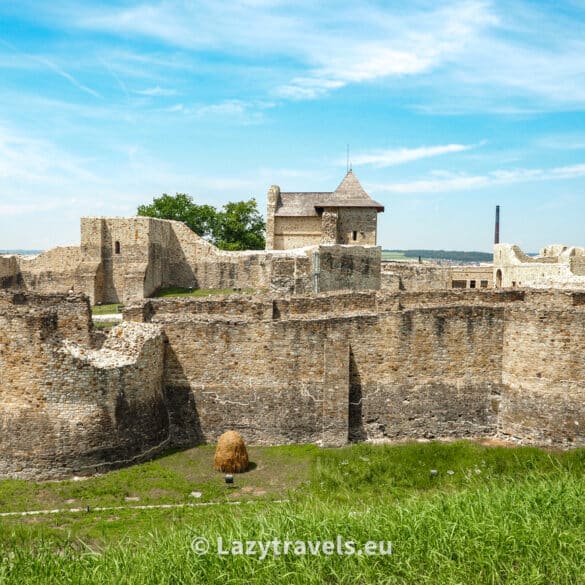I came across Alba Iulia by chance during a trip to Romania. Few people know about the attractions of Alba Iulia, a city that is just trying to break into the first league of tourist destinations. And it has a great chance of doing so!
I had two goals for this trip to Romania: one was to see the magical castle in Hunedoara, and the other was to see the painted churches of Bucovina. If you look at a map of Romania, you’ll see that these two attractions are separated by the whole country, so I really wanted to see something in between. After a quick look on Google Maps, I spotted Alba Iulia. Then I looked at the photos and I knew I couldn’t miss it. I’m sure you’ll agree that the photo below is beautiful! I know not everyone is into defensive fortifications, but I just thought I’d mention it for those of you who are.
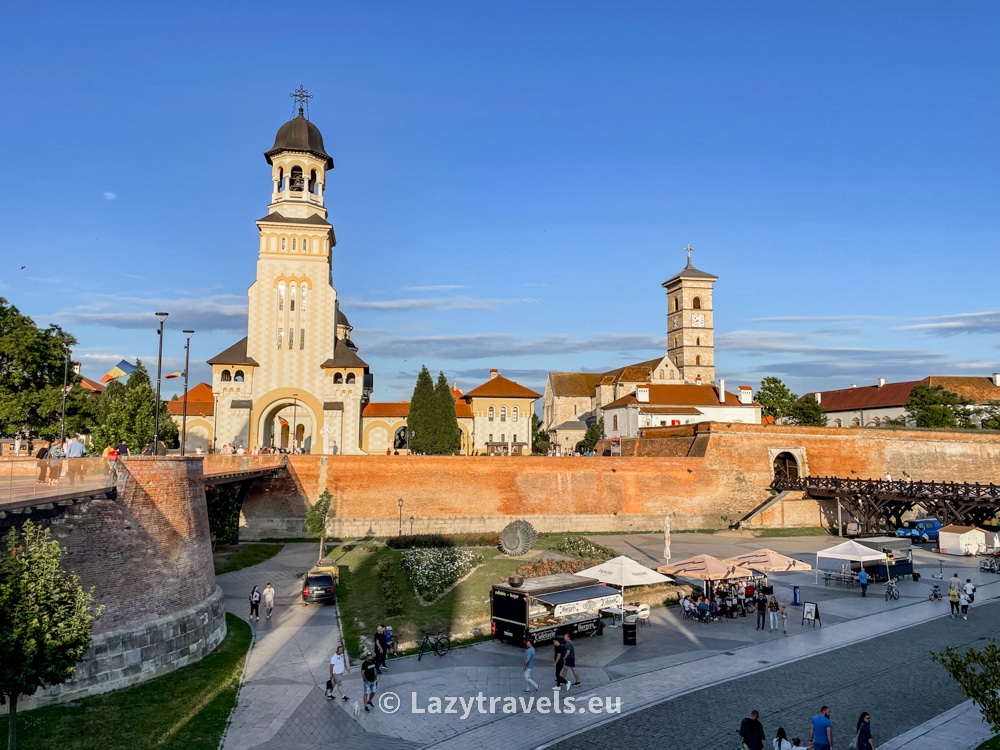
Alba Iulia – a city full of surprises
When I was walking to my hotel, I was surprised by all the flowers! Alba Iulia could easily be called the city of flowers! They were everywhere, from wildflowers growing on the streets to beautifully tended flowerbeds by the apartment blocks. It’s hard to put into words, you have to experience it for yourself. When you walk down a street and you can smell something so delicious! And when I got to the old town, there was another surprise. I have seen a lot in my life, so it’s hard to be surprised, but the city of Alba Iulia is simply stunning. And what made me stop in my tracks? It’s the size of the fortress!
Alba Iulia, the old town, is a fortress. But not just any fortress, not a small defensive bulwark, but a mighty, extensive fortification on a hill. Here, fortification engineers worked together with nature, adding their own touch to the natural defences. This created a beautiful mountain that was also very strong. In the 18th century, designers took into account both defensive and decorative qualities. Look at the photos and take a closer look at the lower gate of the fortress. It might have been an ordinary angular structure, but the architects decided to make it more elegant.
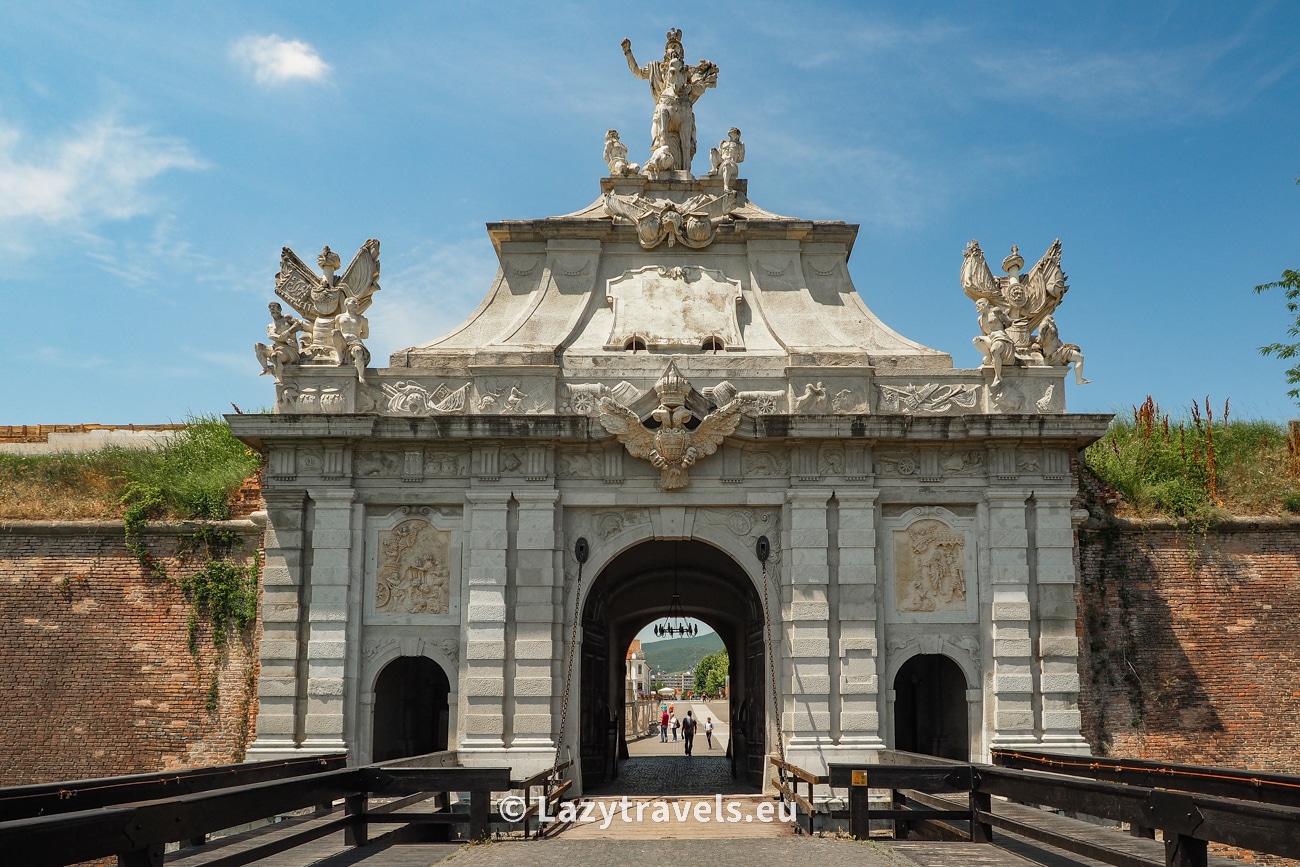
And higher up, along a steep road, there is another gate, the right one, if the enemy could get that far. And it is the same here, also governed by nature. If I were an attacker, I would feel sorry for shooting at such beauty and destroying it like a barbarian. It would feel like the Croatians shooting from tanks at the Old Bridge in beautiful Mostar. After crossing the mighty drawbridge over the now dry moat, we enter the city itself, the heart of Alba Iulia’s attractions.
It’s strange to be in the centre of the city, because there are so many attractions, and yet it seems so empty! After visiting cities like Sibiu, Sighisoara or, for some reason, the less popular Timisoara, it is so different here! There are no medieval streets or historical architecture. There are no crowds of tourists sitting at tables set up in the narrow streets. There is so much space here that there are several large pubs in the middle of the square where you can sit and have a beer or other drink. It’s a great place to spend a hot summer evening. I recommend it because I spent a lot of time here.
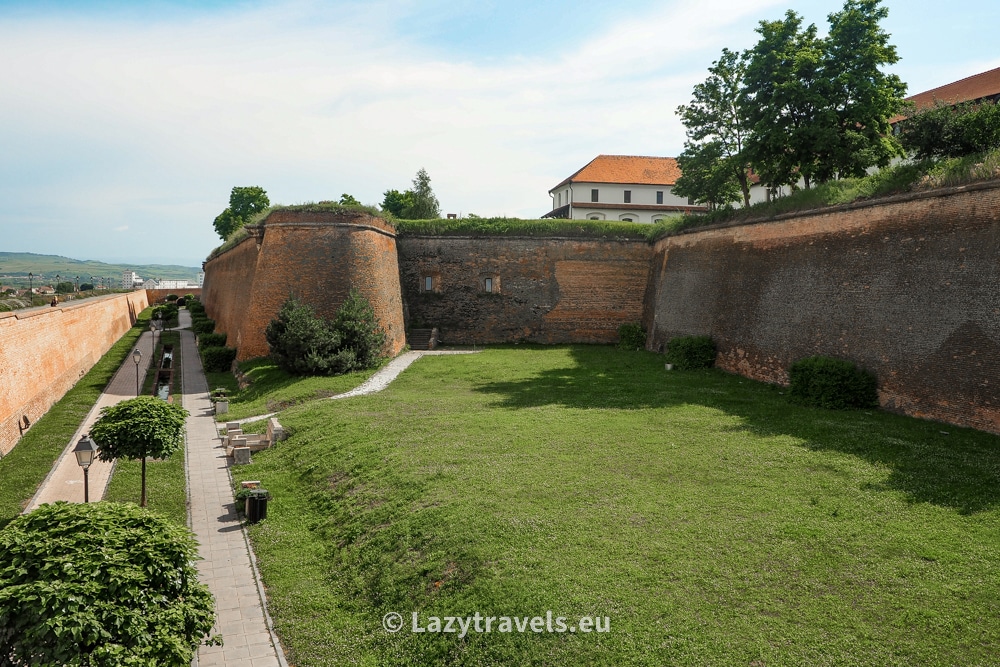
Visiting the attractions of Alba Iulia
I had a whole day to see the sights of Alba Iulia, as I only bought a train ticket for Suceava (the capital of the Ukrainian Bukovina) in the evening. I have to admit that one day is just enough time to see all the interesting parts of this historic city, which is unique for Romania.
The most impressive thing in Alba Iulia is the citadel. It is so big and photogenic that it takes a long time to see it all. The European Union gave lots of money for its renovation, and now the walls look great. Thanks to this money, the bricks are once again laid evenly and their colour is really nice to look at. You can see this best when entering the city via the aforementioned bridge. The kilometres of former fortifications are lined with brickwork several metres high. The builders must have used a huge amount of brick.
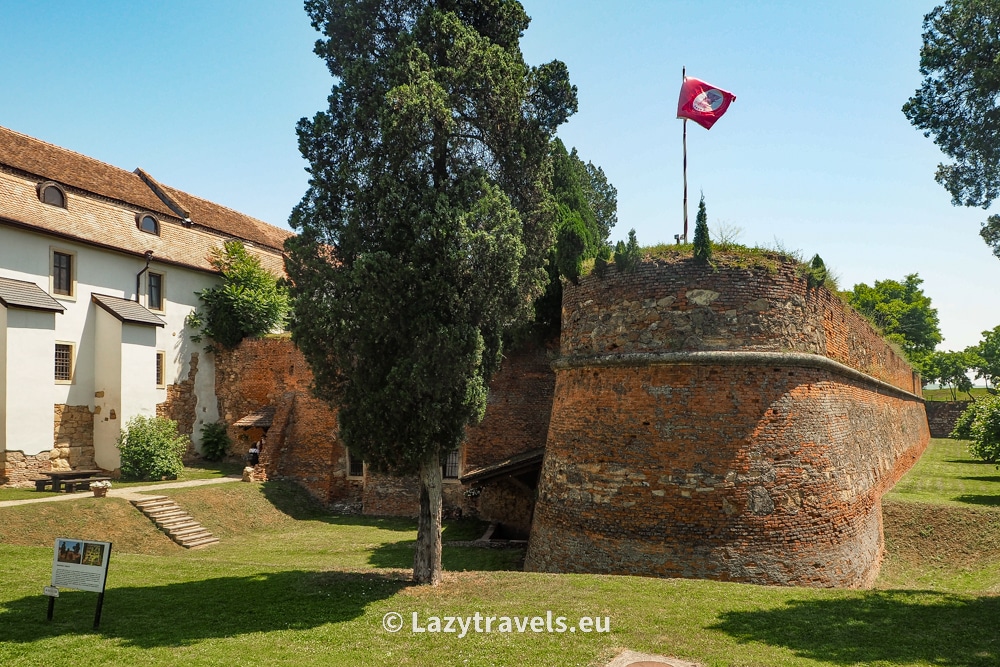
The fortress is shaped like a seven-pointed star, with seven gates leading to it. It was built very quickly, between 1716 and 1735. It is still one of the largest fortresses in south-eastern Europe. If you have the time, I recommend going down into the moat and walking around at least part of the fortifications. You can see just how powerful the building is and how much work has been done to restore it. Interestingly, there is still a lot of renovation work to be done, because you can see that the inside is a mess and that they are often just caves. But some of the bastions have been turned into beautiful green gardens, full of flowers, as befits Alba Iulia.
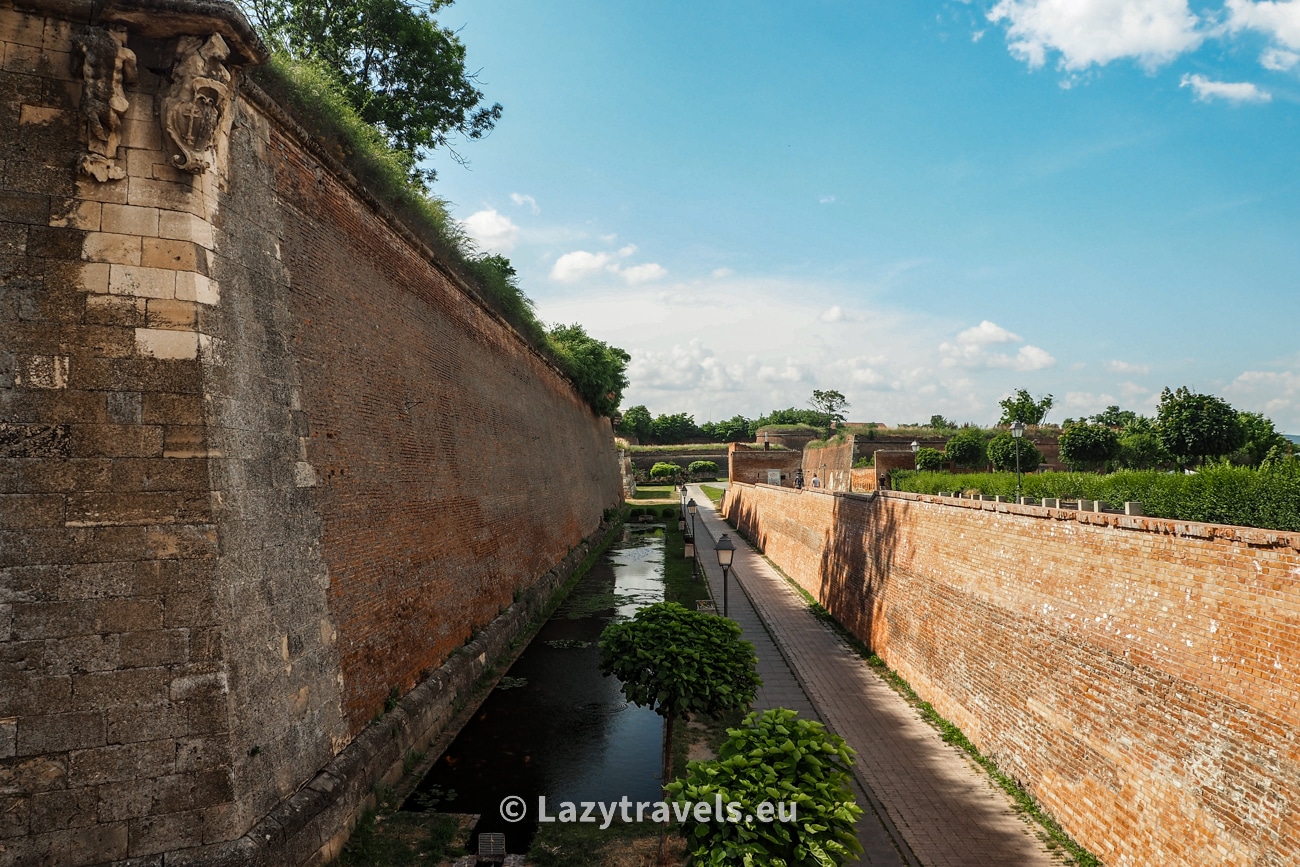
But the walls on the western side are different. There are several new descents, and the bottom of the old moat has been developed and made accessible to the public. That’s why you can hire scooters and tricycles to take you around the fortress. There is also a tourist information centre and lots of pubs where you can have a coffee or a drink. And if that’s not enough, there’s a stage where you can dance classical dances like the tango. It’s a really lovely place.
Parade of a reenactment group
There is another tourist attraction. At 12 o’clock, if I’m right, there is a military parade on the southern part of the walls. It is put on by a group of people dressed in clothes from that time. They play the bugle call on the trumpet, give military commands, move around the square and then march to another place, followed by a circle of tourists. It’s quite funny to watch. The whole group moves towards the defensive walls, where there are several cannons.
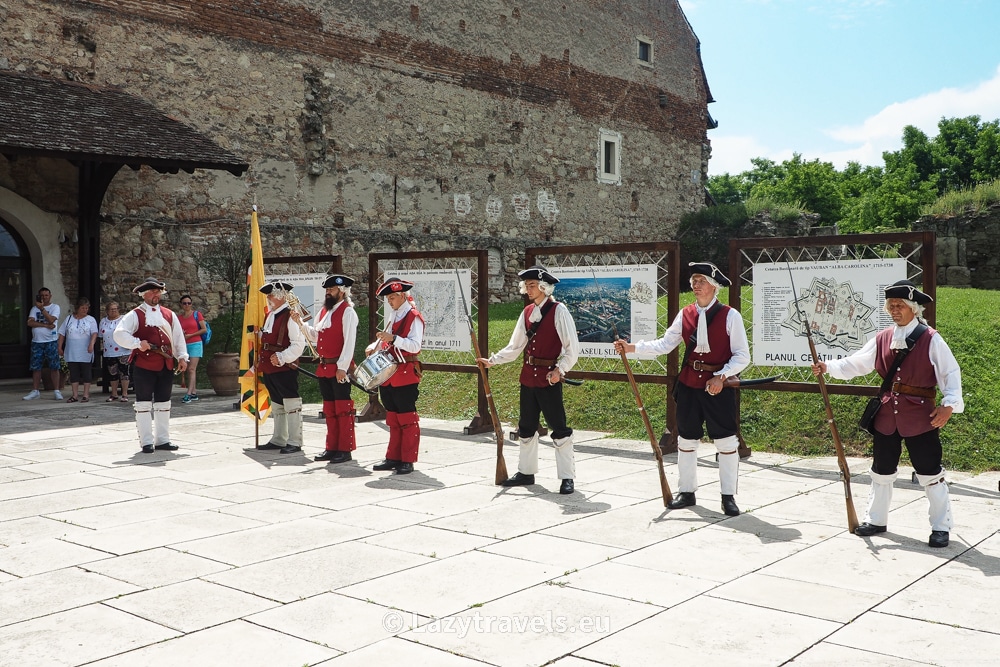
That’s the main event in a nutshell: Then, suddenly, there’s a cannon shot! Then the spectators clap and you can have your picture taken with the soldiers. Then you can visit the underground museum. There are medieval-style rooms, armour, tables, chairs and coats of arms to look at. It has its own atmosphere, and on a hot day it’s nice to hide in the cool cellars.
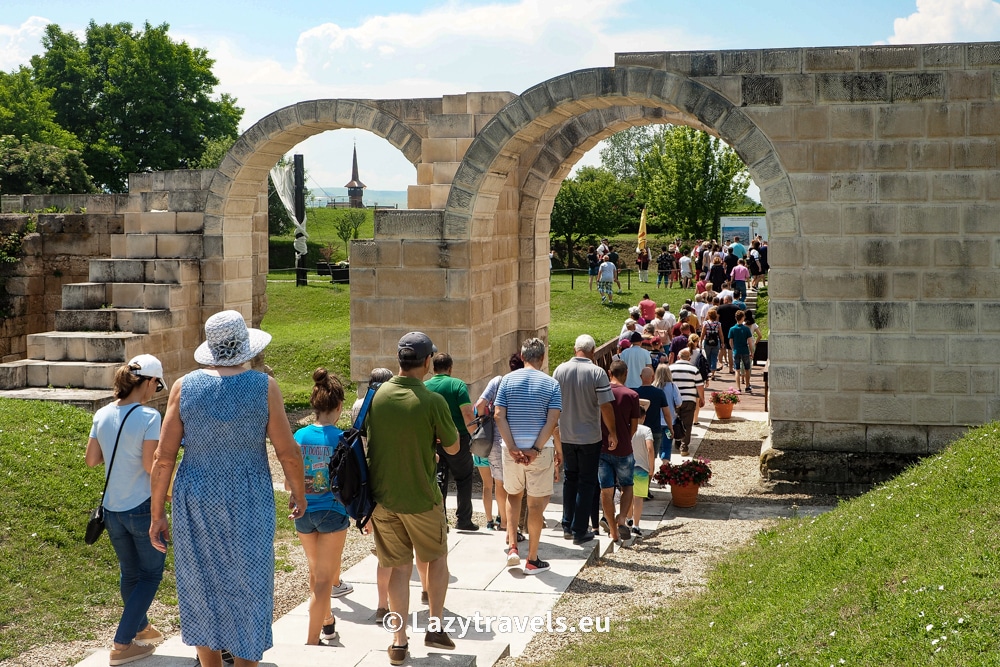
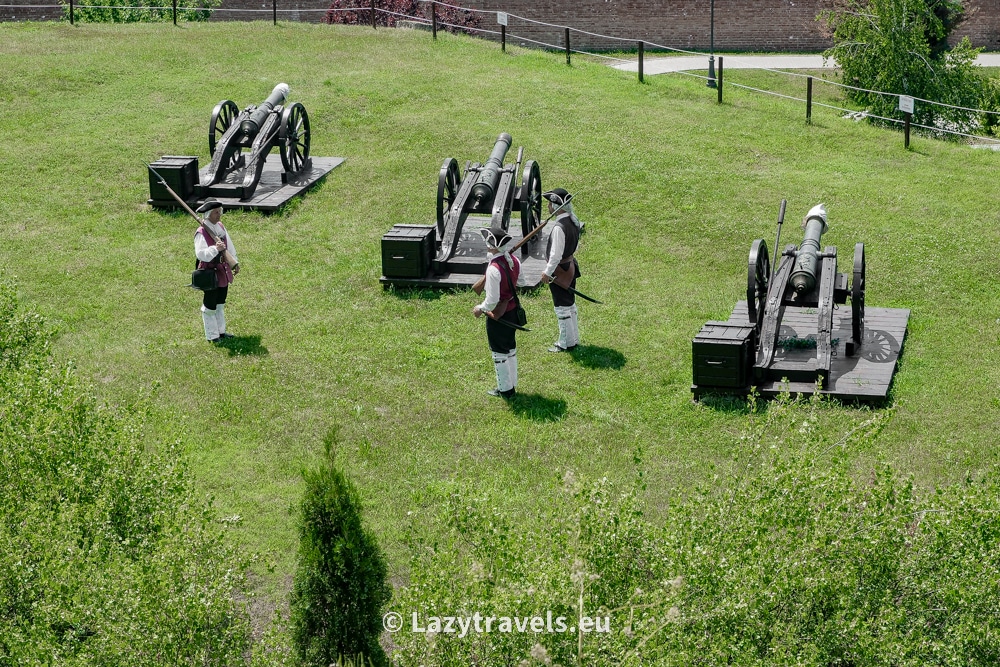
And if you are already there and have paid for your ticket, it is worth taking a walk around the area to see what remains of the Romans, for whom this was one of the most important provinces: Dacia.
The Romans in Alba Iulia
Rome has a special place in Alba Iulia. In the past, the Castrum XIII Gemina Legion was based in Apulum, the capital of Dacia. Its job was to protect the area and help the Empire stay strong. The legion was based in a castrum, or fortified camp, which was around 500 by 750 metres. Today, only a few parts of the walls remain. Unfortunately, many battles have been fought there and the city, or what is left of it, has been plundered many times.
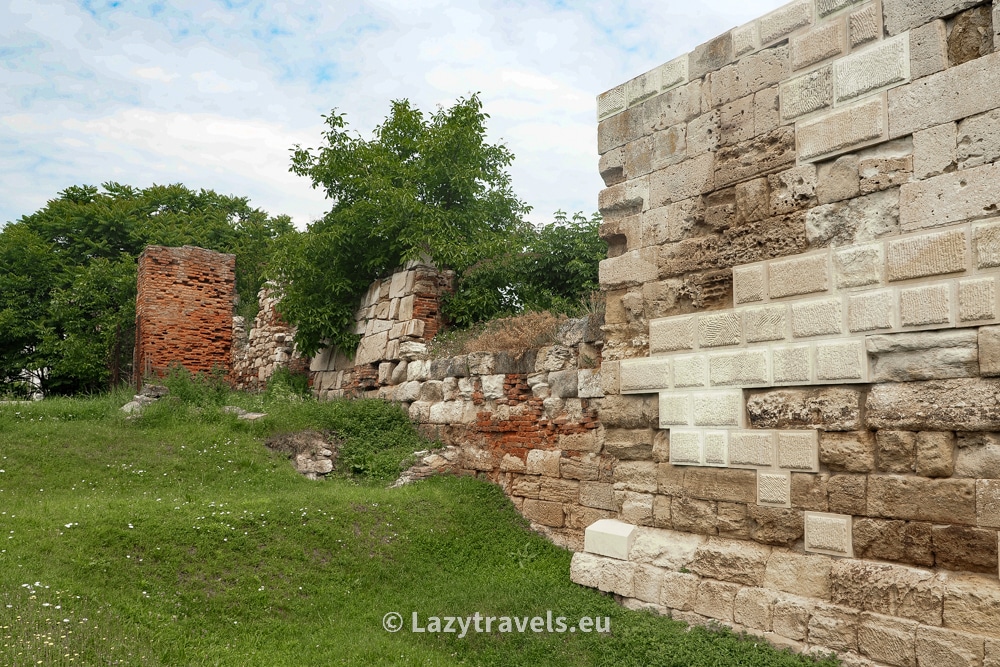
But the stone is strong, so you can still see the foundations and outlines of the old houses. We know what the Roman camp looked like because archaeologists have dug there. Its main road was called the Via Principalis, which connected the two entrance gates. There were buildings on both sides of the road, but not many have survived. However, archaeologists have found the drainage systems that the ancient engineers built.
And while we are on the subject of Roman remains, it is worth visiting the museum dedicated to them. In a special pavilion on the edge of the main square, Alba Carolina, you can see what has been found during the excavations. And in front of the pavilion there is a kind of lapidarium, a collection of stone slabs with inscriptions from the Roman period. And what’s inside? There aren’t many tourists around, so the person in charge of the site is happy to spend time with visitors.
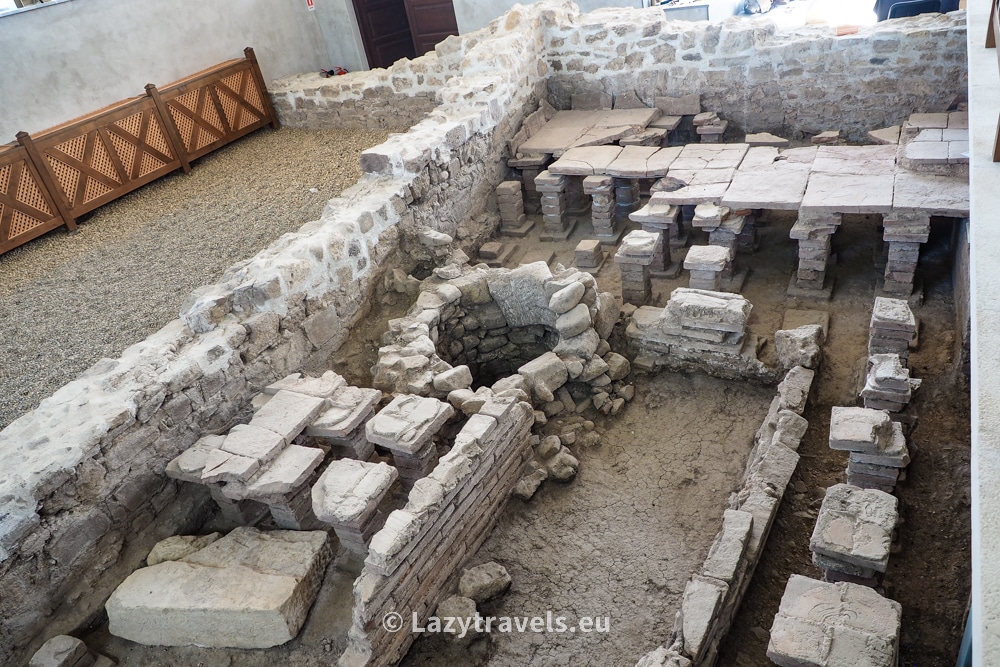
When I went in, I found him working. He was using a small hammer to make some ornaments for what I think was a breastplate. Turns out he’s a re-enactor, playing a member of the XIIIth Legion, who were here almost 2000 years ago. They perform during special festivals in the town and the surrounding area. The curator will show us a video about what we can see here, what was here and what remains. Then he will tell us about the exposed stones that are the foundations of the former Roman camp.
Churches in Alba Iulia
Alba Iulia has two churches. One is a 20th-century Orthodox church that is much bigger than the other buildings around it. To be honest, I won’t spend much time there because it’s just an ordinary Orthodox church.
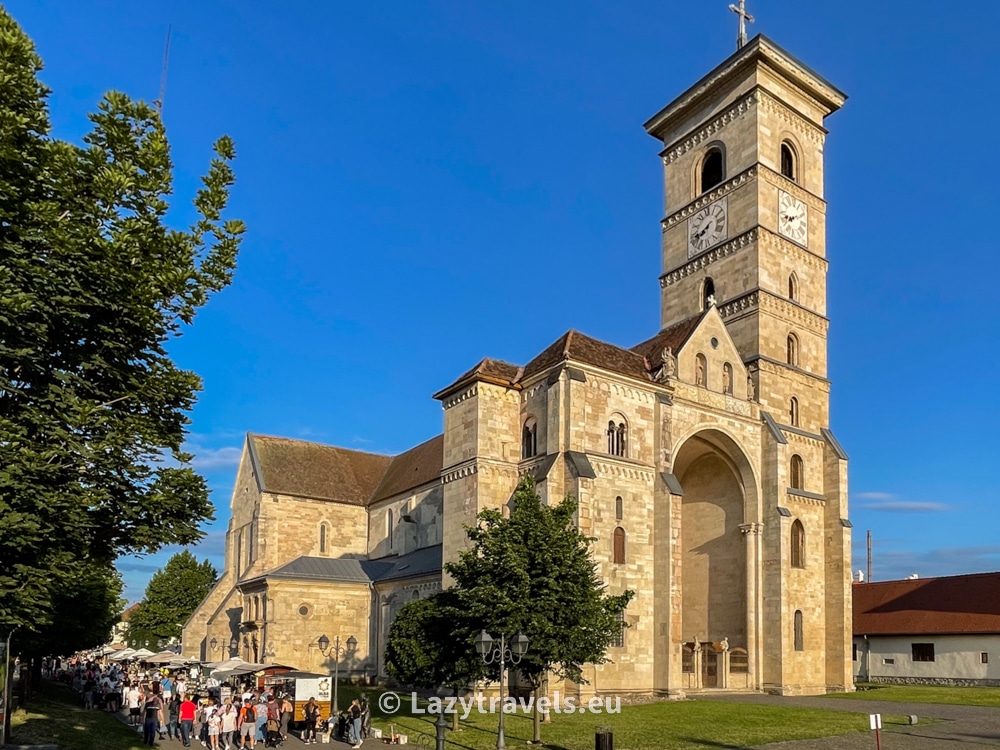
But you should definitely stop off at St Michael’s Cathedral, as it is a first-class monument. This 800-year-old building, which dates back to the 13th century, has seen a lot. You can also see the whole area from the 56.7 metre high tower. There were supposed to be two towers, but the twin has never been built. The interior is rather empty and plain, but it hides the graves of important people.
The most famous of these is Jan Hunyady, who became famous for beating the superior Turkish forces near Belgrade. He basically roasted the Turks by setting fire to straw and oil under them during the ambush, burning thousands of Janissaries alive. This is just a curiosity as to who this brilliant strategist was. He died of typhus in Zemun, which is now part of Belgrade.
It is also worth walking all the way around the cathedral, because on the south side, high above our heads, we can see marks in the wall made when the city was attacked. These are the remains of the shelling of the city. Unfortunately, I cannot remember what year it was.
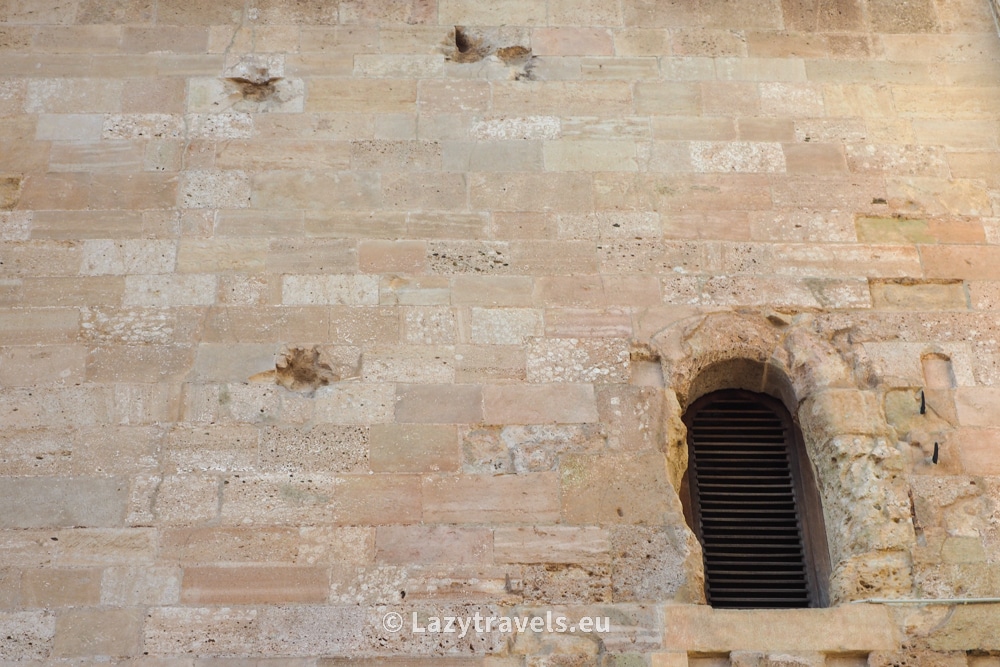
Monuments of people
To be honest, I don’t know what to call it, but all over the fortress of Alba Carolina there are monuments, or rather life-size figures of people from ancient times, made of brass (I think, because I’m not an expert in metals). They are a reminder of the place cast in metal. It’s really interesting… there’s a priest teaching children, an elegant couple from the 19th century, a shopkeeper, soldiers from two hundred years ago and legionnaires. The legionnaires even have their own nicknames. One of them is called High Five because of his raised hand and the other is called Selfie Man! It’s pretty funny 🙂
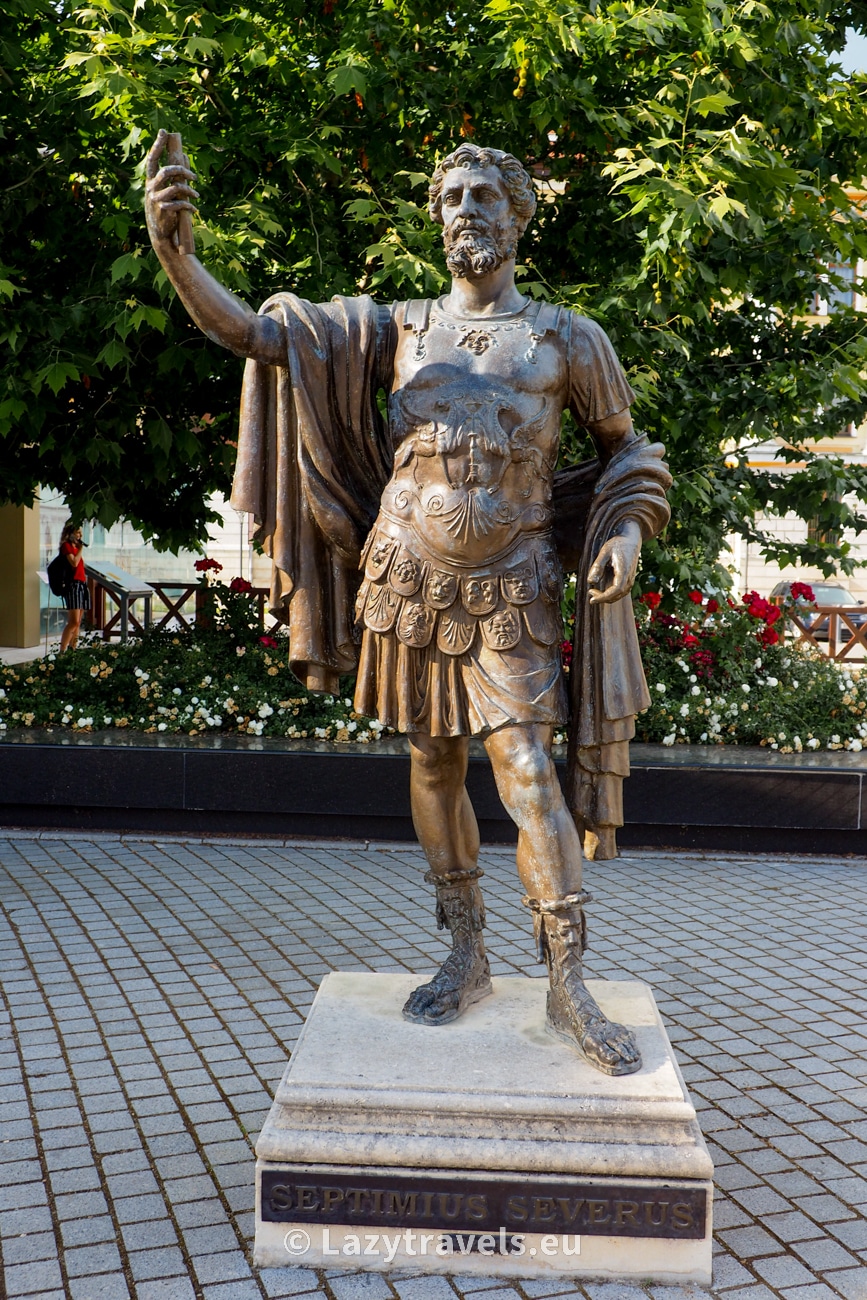
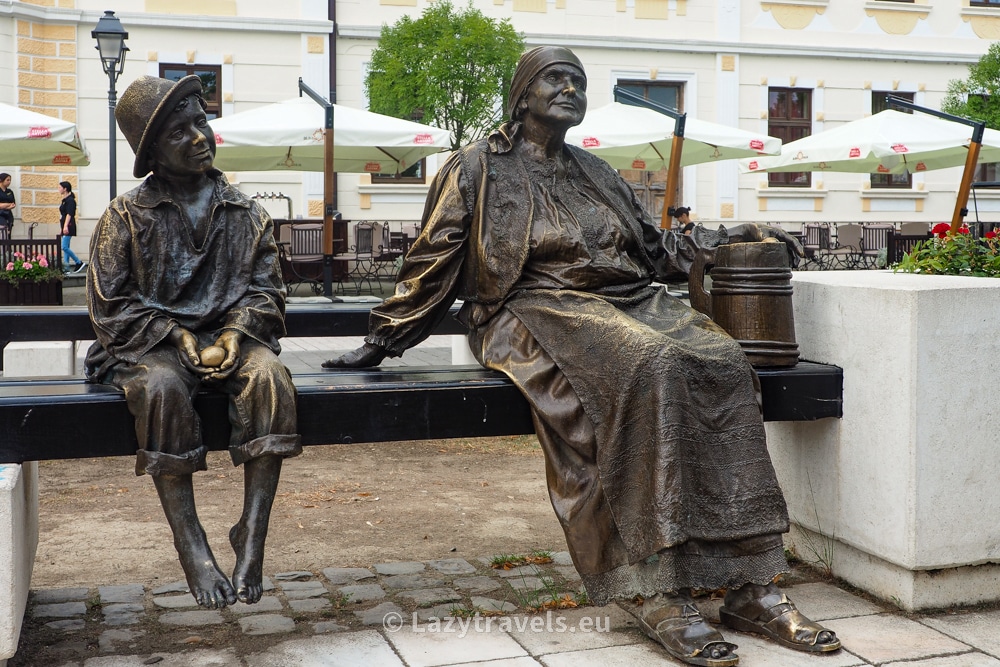
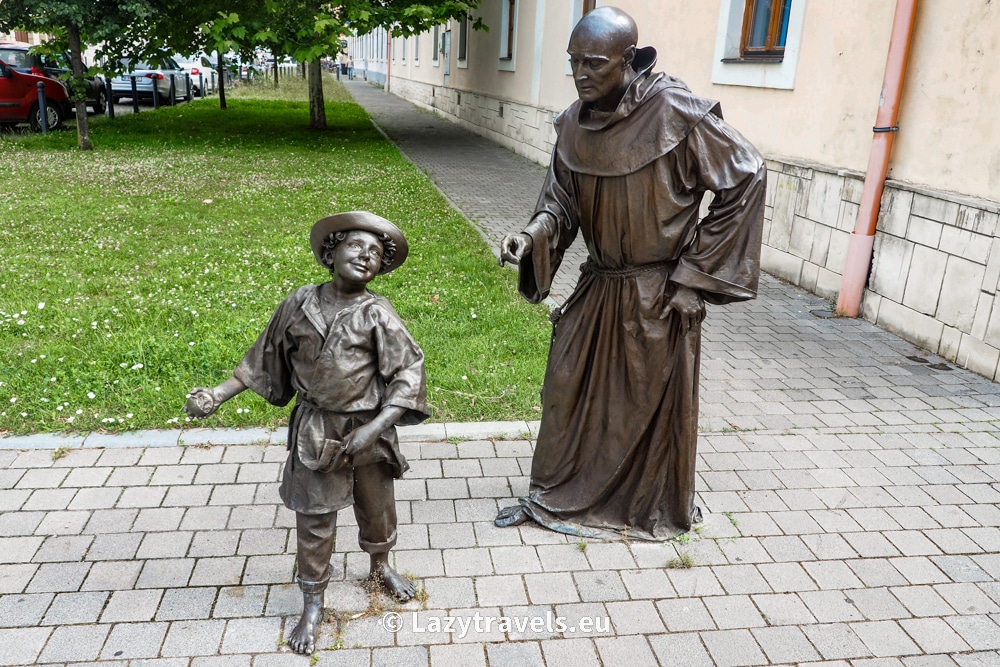
The Alba Iulia History Museum
There is a museum in Alba Iulia. In fact, there are several museums, but I will talk about the main one, the National Museum of the Union. It’s not a very exciting place, but it’s a typical museum like hundreds of others around the world. There is no multimedia, nothing to touch, experiment with or see. There are display cases with artefacts and other items that belonged to the people who lived here. You can also learn about the history of the Romanian lands. There are also stories about how the executioner did this or that to someone in front of the crowd to send a message that the authorities will not let up! You can also see swords, skeletons, pearls, pots, jewellery and ancient sculptures. All in all, it’s a place for museum lovers. I like it, but not everyone will.
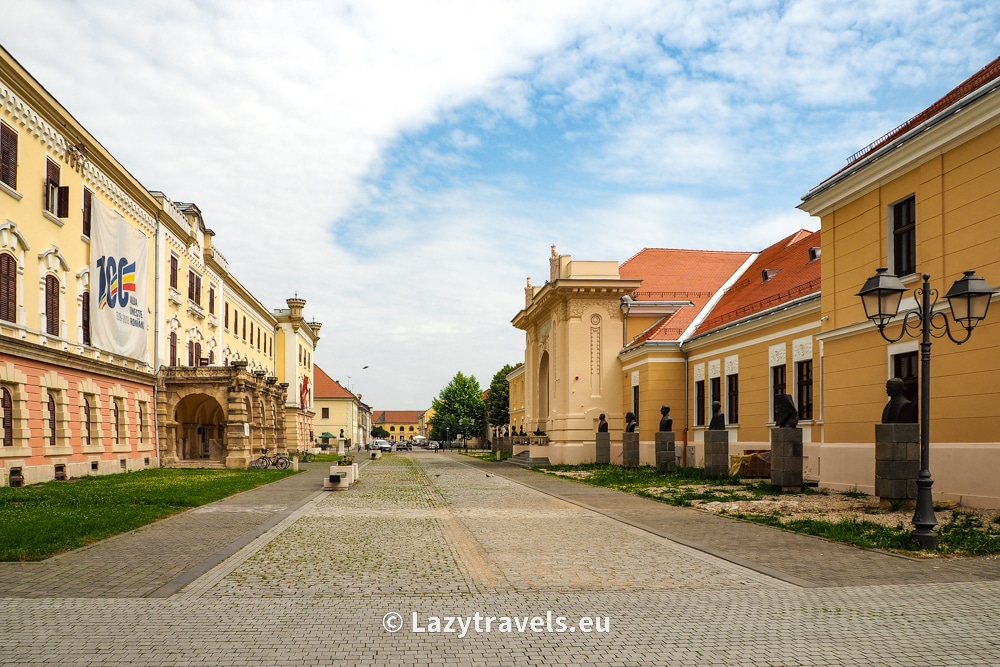
I will tell you that Alba Iulia is my personal discovery and a surprise, comparable to the much smaller Medias, which I visited by chance during my last visit to Romania. I’ve heard that Alba Iulia is totally uninteresting. I would like to say that for me it was a fascinating place and I will surprise you, but I would like to come back here for a day. I felt good here. And to be honest, since I wrote these words, I’ve been to Alba Iulia twice.
Now it was time to go to the station and catch the night train to Suceava. It was about time, because there was a big storm coming from the north.
Where to sleep in Alba Iulia
Like any major city, Alba Iulia has quite a good accommodation base and there is something for everyone’s budget. I stayed at the four-star Vila Preciosa hotel. It turned out to be very affordable and conveniently located.It was really close to the entrance to the hill with the citadel. The room was comfortable, and the bathroom was clean and well-maintained. It was perfect for one person. Another bonus was the wine and cheese they provided when we arrived. The hotel restaurant was excellent, and the fact that not only guests ate here, but also people from the city, is a big plus.
I used the following websites when writing this article: Romaniatourism, Albaiuliaqr and the information boards next to the monuments.

